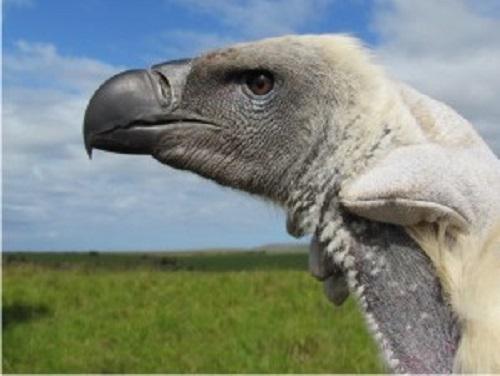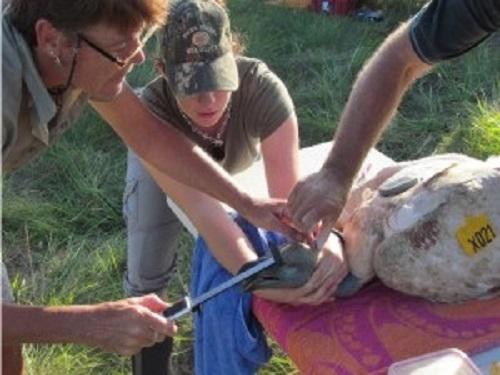Morgan Pfeiffer
Other projects
1 Mar 2018
Cape Vultures and Wind Energy: Unravelling the Effect of Threats and Possible Mitigating Measures
This project aims to identify the foraging range and habitat use of adult Cape Vultures from breeding colonies near the proposed wind energy development zones in the Eastern Cape Province. We also plan to investigate how wind conditions, land use, and topography effect vulture flight height in regards to different flight modes.

Vulture.
The South African Council for Scientific and Industrial Research (CSIR) has excluded some areas of the Eastern Cape Province for wind turbine development based on concerns of threatened vultures. Large soaring raptors, such as vultures, are susceptible to fatal collisions with wind turbine blades. The Cape Vulture (Gyps coprotheres) is endemic to Southern Africa and 20% of the global population resides in the Eastern Cape Province. Currently, the CSIR placed 20-40 km buffers around Cape Vulture roosts and breeding colonies that exclude wind turbine development. These buffers originate from models predicting how far breeding vultures forage from the colony in the breeding season. Assuming that vultures are central-place foragers, they will search for food in a roughly circular area around the roost or colony. However, vultures are known to be far-ranging foragers and 40 km buffers are not sufficient to protect all of their foraging areas. Hence, detailed knowledge of how Cape Vultures use the air space between roost and colony buffers is essential to prevent numerous mortalities of this threatened vulture species in regards to wind turbine developments in the region.

Measuring.
Placing transmitters on adult vultures will yield data that will assist with the conservation management of this species. CTT-1100 solar powered GPS/GSM transmitters (Cellular Tracking Technologies) will be placed on a minimum of 2 adult Cape Vultures from each of the following breeding colonies: Colleywobbles Important Bird Area (the largest colony in the Eastern Cape Province), Dalhousie, Castle B, and the vicinity of Kugqebenya to Mbenge. These Cape Vulture breeding colonies were chosen based on the number of breeding pairs, proximity to the wind development zones, and are located in different land use types. Colleywobbles and the six colonies south are located in subsistence farmland. Dalhousie and Castle B Cape Vulture colonies are located north of the wind development zone in commercial farmland with registered vulture feeding sites. Hence, it is possible the vulture’s foraging ranges from these selected colonies may differ because of the distribution of carrion resources. GPS/GSM transmitters will collect location, elevation, and speed data every 15 minutes. Data collection will continue for a minimum of eight months.